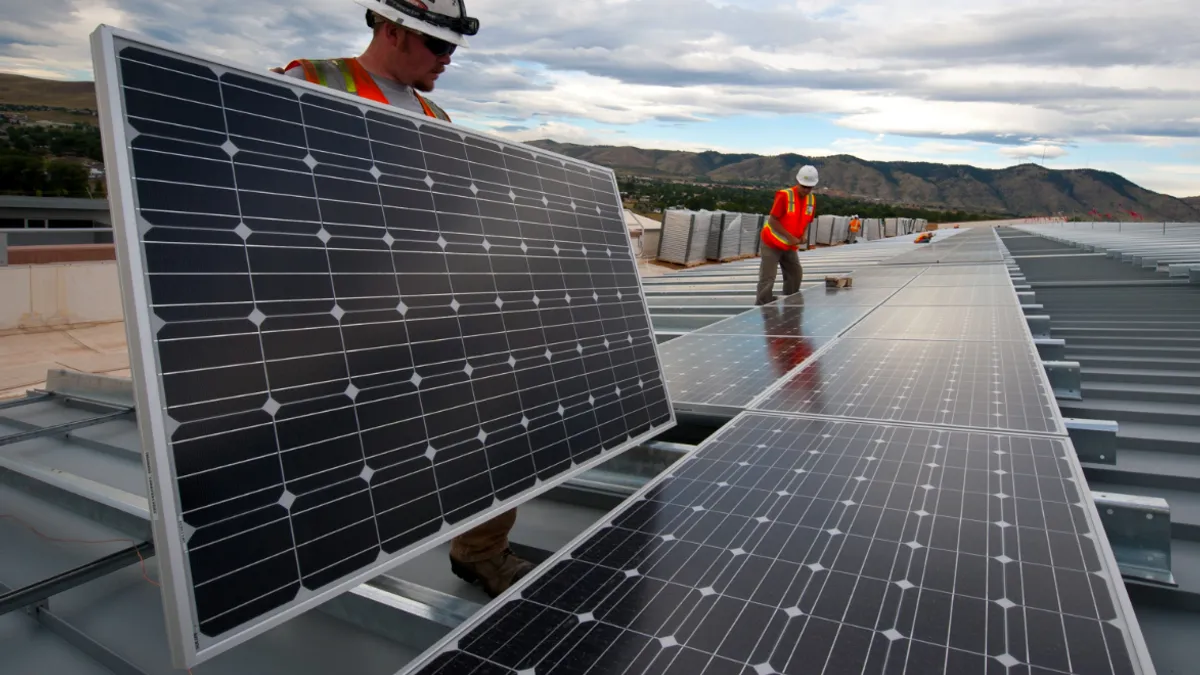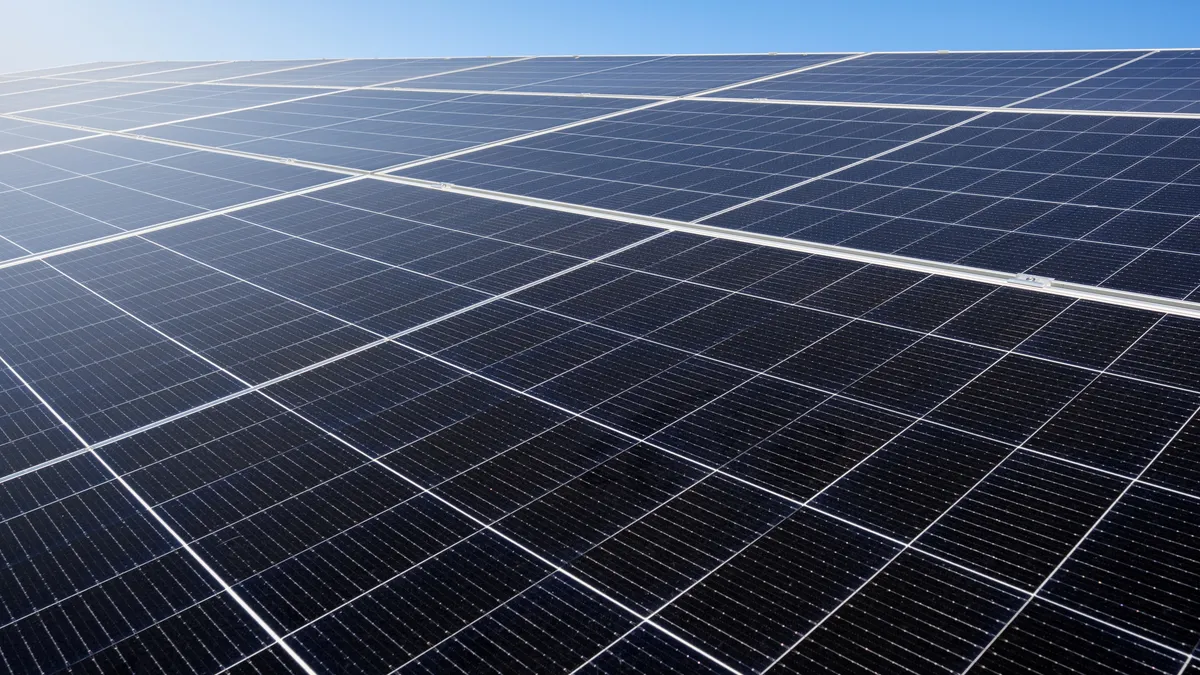President Donald Trump's decision to impose tariffs on imported solar equipment cleared up a lot of uncertainty for the energy sector. But the decision also left lingering questions and fears over the future of the solar industry — and utility investment.
On Monday, the Trump administration announced it would impose 30% tariffs on imported crystalline silicon photovoltaic modules and cells, concluding a widely-watched and controversial trade case.
Solar representatives, led by the trade group the Solar Energy Industries Association, utilities and Trump’s conservative allies bashed the decision. At least 23,000 solar jobs — a faster growing industry than coal, for instance — will likely evaporate this year, SEIA says. All segments of the solar market — from utility-scale to residential (rooftop) and commercial and industrial — will cool.
The utility market is widely considered the most vulnerable to tariffs, since it composes the vast majority of installation to date. With razor-thin cost margins, utilities cautiously pick the most cost-effective fuel resource — and only recently has solar been able to compete on its economic merits with coal and gas.
However, analysts and utilities are cautiously optimistic about continuing investment.
"While tariffs may delay investments in solar generation at first, we think the long-term impact will be limited since the tariffs expire in four years and the recent pricing of solar energy for 2023 reached record lows," said Lesley Ritter, an analyst at Moody's Investors Service in a statement. "The near-term impact is also partly mitigated by annual tariff declines, exceptions for the first 2.5 gigawatts of imports, and exemption of Canadian panels."
Potential impacts
A new report from GTM Research says utility-scale solar deployments are set to decline 11% from the tariffs or by 7.6 GW in the next four years. About 65% of that is utility-scale solar. The duties decline in 5% increments over four years, which means the decline will likely be the harshest in the first year — 2018.
"2018 would have been a down-year anyway because of where the development pipeline is [after] the threat of the [investment tax credit] retiring in 2016," said MJ Shiao, a solar analyst and one of the authors of the GTM report.
But those numbers absent the tariffs would have rebounded in 2019, in part due to the rush to meet the new deadline for the ITC. Now it appears it will take a longer time once the tariffs expire in 2022, Shiao said.
"It's not like solar is completely going to disappear," Shaio said. "But some projects that are on that cusp are going to be pushed out of that market."
Some state markets will weather the downturn better than most, but the southern portion of the U.S. is expected to take the biggest hit. According to GTM, Florida, Georgia and South Carolina are among the most vulnerable; and these are nascent markets whose utilities just began investing in more solar as costs tumbled.
Southern Co. and NextEra subsidiary Florida Power & Light didn't issue immediate comments. However, NextEra came out against the proposed tariffs during the trade case proceedings last year, noting it already had a "chilling effect" on the solar market.
Meanwhile, Duke Energy pledged to keep investing in solar, noting it was premature to speculate on the impact of costs for projects.
"Duke Energy has major expansion plans for solar, and this tariff will increase the cost of delivering that to customers," Duke spokesman Randy Wheeless wrote in an email. "But it's premature to say if that's a major or minor increase."
Next steps
Renewable portfolio standards and other state incentives could be one avenue toward continuing investment, particularly in the power sector. But SEIA President Abigail Hopper said it was too soon to tell how companies will respond.
"I think as companies and developers understand what this will mean for their business model, we will likely see some evolution in the coming weeks," she said during a press call. "Increasing RPS and increasing opportunities will be one way to do it. So there could be opportunities to pursue those avenues instead of head-to-head markets."
But there may not be as much appetite among states to boost RPS to more aggressive standards. New Jersey was the latest in a series of states scuttling attempts to expand those mandates. GTM's Shiao noted another avenue could be more legislation requiring community solar investment.
Aside from the tariffs, the recent tax overhaul could spell more complications for companies as they seek to finance these projects. That, combined with tariffs, could have an even greater cooling effect on the market. But it’s clear that solar investment will continue, despite these hurdles, as utilities look to a long-term future with cleaner energy.





















